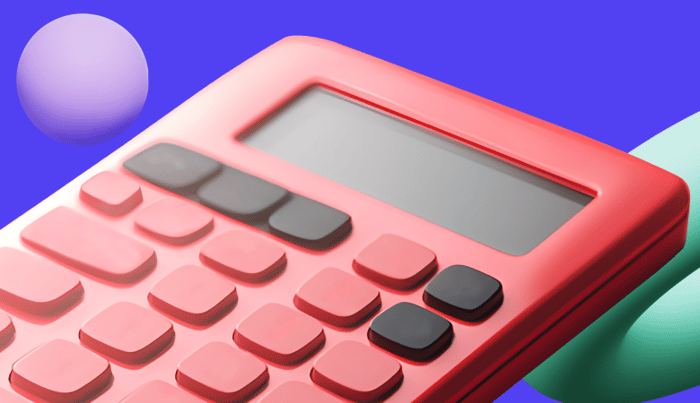HubSpot Strategy Delivery Web Design
5 Best Practices for Designing and Developing HubSpot Forms
11/21/2022 • 4 min read • Written by Sara Sprenger
Table of Contents
When was the last time you visited a company’s website and didn’t see at least ONE form?
If you can’t think of any, that’s because most companies choose to implement a variety of forms for lead generation purposes. You’ve probably seen forms with messaging like:
- Contact us!
- Sign up for a free trial!
- Register for a webinar!
- Download your guide!
At the end of the day, a form is a transaction. You are asking for something of value to you – a lead’s contact info – and you are offering something in return: information or offers that your new lead may find useful. HubSpot offers marketers a powerful form design and distribution platform that empowers them to convert more visitors into leads.
By now, everyone knows that filling out a form will put you on an email and/or call list, so how do you convince people that it’s worth it to connect with your company? Your form design, especially in the context of your website and landing pages, will invariably play a part in a person’s decision to become a lead for your company.
What is Form Design?
Form design is the process of creating a web form — where your site visitors can input and submit their information — while keeping the form's layout, format, UX, appearance, and other factors in mind.
Since a form submission is an invitation to market to an individual who is interested in what your company is offering, it's important to consider three things about your form; how it looks, where it's located, and what information you're trying to get from them. Ultimately, you want visual appeal, intentional placement, and to make sure you're asking the right questions to effectively market to the individual, but not so many that it steers prospects away.
Think about all the sloppy forms you've encountered on sketchy webpages that ask too many questions. Is that the work of a company you'd trust with your personal information, even if you are interested in their product? Probably not.
How Do You Build a Great Form?
Plan, plan, plan!
Suppose you're a project manager or the one responsible for creating a form. You'll need to be sure all your team resources — designers, developers, content creators — are on the same page relative to your client's or department's primary business objectives and goals. Here are some essential items to plan for:
Connectors: Can all of the data on the form submissions live in your HubSpot CRM or do you need to set up integrations before you make your forms live? If the data from your form submissions need to go into an external app, explore the app marketplace to see which data sync options are available to you. HubSpot's Operations Hub offers expanded custom API integrations for more seamless data flow between systems.
Workflows: Automate your contact segmentation and marketing communications. How will you sort individuals based on the information you gather from their form submissions? HubSpot empowers you to use form submissions to segment and market, and plan how you'll use the data you gather. The latest workflow builder now includes AI-powered response routing that can automatically assign leads to the right team members based on form responses.
Brand guidelines: Do you have a recent style guide or brand strategy? Ensure that your form's design, including the landing page it may live on, is consistent with the rest of your branding. HubSpot's theme manager now allows you to save and apply branded form styles across your entire portal.
Designing a HubSpot Form
Once you've planned everything out, it's time to get to work on form design. Some tips:
Keep it simple! You can build attractive forms straight from HubSpot's form editor — they even provide common templates to build from. The latest form builder includes accessibility compliance checkers to ensure your forms meet WCAG standards.
Create your own! If you don't see a template that applies to you, make one from scratch. Think about your user experience: do you want them to come upon an embedded form while reading a particularly interesting piece of content, or should it slide in or pop up? HubSpot now offers advanced targeting options that can display different form types based on visitor behavior or attributes.
After you've created your form, you should preview it across various devices. If you're using HubSpot's website tracking analytics, you can actually see which devices the majority of your users are accessing your website from so that you can prioritize the user experience for those devices. HubSpot's responsive testing tool now simulates over 30 different device sizes to ensure optimal display across all screens.
When you design an appealing and brand-consistent landing page to host your form, this tells visitors what you're offering now without taking up precious real estate on your main site. If you click on the image below, you'll see a great example of a form embedded on a landing page.
Get Started with HubSpot Forms
Forms are some of the most important assets in any marketing campaign. Good form design will get you more leads, and good form strategies, like automation and segmentation, will help you make the most out of your form submissions.
HubSpot's latest form analytics now show real-time abandonment metrics and field-level hesitation tracking, helping you identify exactly where potential leads are dropping off in your forms.
Don't have an in-house or agency designer or developer? You can still make easy color or style adjustments with HubSpot. Just use the standard form and make simple adjustments to get started in minutes. For those with no design experience, HubSpot's AI form designer can now generate branded form layouts based on your website colors and styles with a single click. If you need additional guidance or help with a unique form, reach out to our team.
By: Sara Sprenger
As the Chief Marketing Officer of Lynton, Sara is a jack of all trades. She thrives on diving into diverse areas like marketing, web development, and integrations, all with the goal of helping clients unlock their full potential. She's passionate about tackling challenges, solving complex problems, and embracing new experiences. When she's not using HubSpot to solve the world, you’ll likely find her being a Floridian at the beach or spending quality time with my dog, Maple Leaf.
You May Also Like
HubSpot
What You Need to Know About Tracking URLs for HubSpot Campaigns
With a tracking URL, you can see how and when visitors access your site through a URL in a specific campaign. Learn more abou...
Keep Reading
Sales & Marketing
How to Use HubSpot Payment Links for B2B Businesses
Streamline your B2B payment process with HubSpot Payment Links. Discover how it simplifies transactions, integrates with your...
Keep Reading
Web Design
How to Create Private Content on HubSpot
Want to gate a premium piece of content for exclusive subscribers on your website? Learn more about creating private content ...
Keep ReadingSubscribe Today

